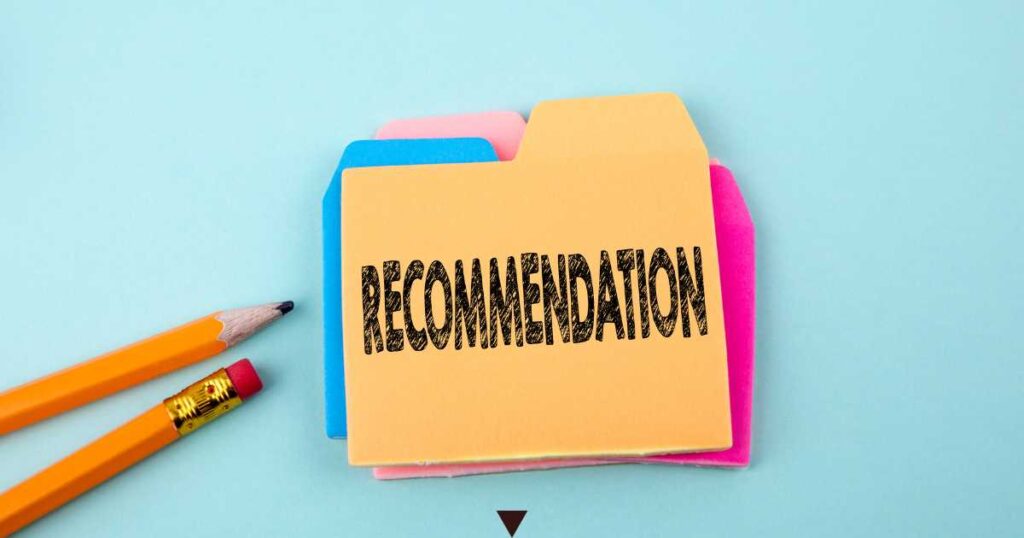Completed Staff Work is crucial in leadership development.
Since 2004, I have been training leaders in problem-solving, decision-making, delegation, action planning, and accountability—all vital parts of Complete Staff Work.
Often, incomplete staff work leads to confusion, delayed decisions, and inefficiency. Common issues include unclear communications, missed deadlines, and lack of clarity in responsibilities.
This guide will introduce you to the essential concepts and practices of Completed Staff Work. By mastering these skills, you can enhance your effectiveness and contribute to your organization’s success more significantly.
Incomplete Staff Work Problems
Incomplete staff work creates significant challenges. One major issue is unclear communication. When details are missing or unclear, it slows down the decision-making process and can lead to mistakes.
Another problem is missed deadlines. Without complete staff work, tasks can pile up. This not only causes delays but also increases stress among team members, impacting overall productivity.
When work isn’t properly documented or responsibilities aren’t clearly defined, it’s hard to track who is accountable for what. This can lead to blame-shifting and a lack of ownership.
By understanding and addressing these common problems through complete staff work, we can improve efficiency and foster a more collaborative and accountable workplace.

What Is Completed Staff Work?
Completed Staff Work involves preparing thorough and accurate tasks that help decision-makers act effectively. It means doing all the necessary work so that the next person in the chain only has to approve or sign it.
The concept originated in the military. It was developed to ensure that every level of the hierarchy received comprehensive and reliable information to make well-informed decisions quickly and efficiently.
Consider a scenario where a staff member submits a budget report missing key expenditure details. This incomplete work forces managers to seek additional information, delaying the decision-making process.
In contrast, a complete budget report would include all expenditures, justifications for the costs, and potential savings. It would also anticipate any questions the manager might have, providing answers beforehand. This allows for quicker, more informed decision-making.
Complete Staff Work is about providing all the necessary information and foresight, making the decision process smooth and efficient. Download the Completed Staff Work Memo.
Importance of Completed Staff Work
Completed Staff Work is vital for any organization. It ensures that all information needed for decisions is accurate and complete. This precision helps leaders make better choices quickly.
One major benefit is improved decision-making. With complete information, decisions are more informed and reliable, reducing the risk of errors and subsequent issues.1
Another advantage is enhanced productivity. When staff complete their tasks thoroughly, it eliminates delays caused by missing information or clarifications, streamlining workflows and saving time.
Additionally, Complete Staff Work leads to better resource management. Accurate and detailed reports allow for more effective allocation and use of resources, preventing waste.
It also promotes accountability. When work is done completely, it’s clear who is responsible for what. This transparency builds trust within the team.
Furthermore, it fosters professional growth. Employees learn to be thorough and proactive, skills that are crucial for career advancement.
Complete Staff Work is essential for organizational efficiency, making operations smoother and more effective.
Read: Completed Staff Work vs Business Case Development

9 Steps of Completed Staff Work
In my workshops, I divide the steps into three areas: think, solve, and present. That’s my way of designing the program. I even include Step 0: Be the Boss.
I’ve talked to many who have taken the course where they paid more than 25,000 pesos (for each person). Webinars and workshops are offered to teach people Completed Staff Work. They teach it as a doctrine. And that’s correct. But I also think of it as a discipline. It is a way to become an MVP at work.
It is not uncommon to hear about submitting a memo with no grammar errors, the correct font style, and format.
While writing well is important, this is not what Completed Staff Work is all about. So, I decided to write these 9 steps to guide employees in the Philippine government.
But anyone who desires to learn can use this guide. Let’s proceed.

1. Identify Essential Information
Your boss, Leni, needs a plan to engage employees, and you have 15 days to deliver it.
Start by defining what “engaging employees” means in your context. This includes understanding specific goals like increasing satisfaction, boosting productivity, or improving retention. It’s crucial to gather your team—Jose, Maria, Vico, and Risa—and start by clearly defining the task.
Discuss what engaging employees entails. Outline the specific goals and objectives to ensure everyone is on the same page.
Clearly defining the task ensures that you focus your efforts on relevant aspects, avoiding wasted time on unnecessary details. It sets a clear direction for the entire project and aligns your team’s efforts towards the same goal. When the task is well-defined, you can systematically approach each component, making the process more efficient and effective.
Next, identify the crucial information needed to tackle this task.
What do you need to know to make informed recommendations? This might include current employee satisfaction levels, common engagement challenges, and successful strategies used elsewhere. Engaging with stakeholders is essential here. Talk to employees and managers to understand their perspectives on engagement levels and potential improvements. Their insights will be invaluable in shaping your approach.
Use tools like brainstorming sessions, mind maps, and the “five whys” technique to dig deeper into the issue. These methods help uncover the root causes of engagement problems and identify key areas to focus on. Organizing your thoughts and data systematically will make it easier to move forward with a clear plan.
Finally, divide the research tasks among the team. Assign specific areas to each person—Jose could handle surveys, Maria could focus on industry benchmarks, Vico could analyze internal HR data, and Risa could conduct interviews. This division of labor ensures a comprehensive data collection process and leverages each team member’s strengths.
Read: Identify Essential Information

2. Make Thorough Research
Research is about systematically collecting and analyzing data relevant to employee engagement. This includes using both primary sources (surveys, interviews) and secondary sources (academic papers, industry reports). The aim is to gather a well-rounded understanding of the factors that influence employee engagement in your organization.
Thorough research provides a solid foundation for your recommendations. It ensures your strategies are based on evidence and best practices, making them more likely to succeed.
Without comprehensive research, your recommendations might be based on assumptions, leading to ineffective or irrelevant solutions.
To start, assign research tasks to your team: Jose will focus on employee surveys, Maria on industry benchmarks, Vico on internal HR data, and Risa on conducting interviews. Utilize academic databases, online research platforms, and industry reports to gather comprehensive data. Each team member should know where to find the most relevant information and how to access it efficiently.
Equip yourself with the right tools. Leverage resources like academic journals, industry reports, and online databases. Jose might review recent studies on employee engagement, while Maria could gather data on best practices from similar organizations. Vico can analyze internal HR metrics, and Risa can conduct in-depth interviews with employees to gain qualitative insights.
Once the data is collected, organize your findings systematically. Create a central repository where all team members can access and review the gathered information. This organized approach ensures that nothing is overlooked and that all relevant data is considered in your analysis.
Summarize the key insights from your research. This might include statistics on current engagement levels, common challenges, and successful engagement strategies used by other companies. Share these summaries with the team to ensure everyone is on the same page and ready to move forward with the analysis phase.
Read: The Power of Research in Completed Staff Work

3. Analyze Information Critically
Analyzing the gathered data is crucial for turning it into actionable insights. This step involves interpreting the data to identify patterns, correlations, and key drivers of employee engagement. The goal is to understand the underlying issues and opportunities within your organization.
Critical analysis helps you understand the problem more deeply. It allows you to pinpoint specific problems and opportunities, leading to more effective solutions. Without proper analysis, you might miss important details or fail to address the root causes of engagement issues.
Start by synthesizing the data. Look for patterns and correlations that can help explain the current state of employee engagement. Use tools like SWOT analysis (Strengths, Weaknesses, Opportunities, Threats) to evaluate your findings. These tools help break down complex data and highlight the most critical points.
Create visual representations of your data. Charts, graphs, and infographics can make complex information easier to understand.
Jose might use software to visualize survey results, while Maria could graph industry benchmarks. These visuals will be valuable when presenting your findings to stakeholders.
Hold a team meeting to discuss your insights. Encourage each member to share their interpretations of the data. This collaborative approach helps identify any gaps in your analysis and ensures that you consider multiple perspectives.
Together, draft a preliminary analysis report that summarizes your key findings and insights.
Document your findings clearly, highlighting key insights and their implications. This report will form the basis of your final recommendations, so make sure it is comprehensive and easy to understand.
By critically analyzing the data, you can ensure that your recommendations are well-supported and address the most pressing issues.
Read: Analyze Information for Completed Staff Work

4. Formulate Actionable Recommendations
Formulating recommendations involves developing actionable solutions based on your analysis. These should be specific strategies that address the key issues identified in your analysis. The goal is to provide clear guidance that can be implemented to improve employee engagement.
Clear, actionable recommendations guide decision-makers effectively. They offer a roadmap for implementing changes that can significantly boost employee engagement. Well-formulated recommendations demonstrate your understanding of the problem and your ability to think strategically.
Start by summarizing your key findings. What are the main issues affecting employee engagement? What insights did you gain from your research and analysis? Use these findings as the foundation for your recommendations.
Brainstorm potential solutions as a team. Consider different strategies that could address the identified issues. For example, you might recommend introducing flexible work schedules, creating career development programs, and enhancing communication channels. Evaluate the feasibility of each solution by considering factors like cost, resources, and potential impact.
Develop a detailed action plan for each recommendation. Outline the steps needed to implement each solution, the resources required, and any potential obstacles. Make sure your action plans are realistic and achievable. Assign each team member specific recommendations to flesh out and prepare a concise summary to present to Leni.
Finally, anticipate potential questions and objections from Leni. Be ready to explain the rationale behind each recommendation and provide supporting evidence. This preparation ensures that you can confidently present your recommendations and address any concerns that may arise.
Read: Formulating Recommendations (Turn Insights into Actions)

5. Write Clear Reports and Briefs
Writing reports and briefs involves documenting your analysis and recommendations clearly and concisely. This step is crucial for communicating your findings effectively to decision-makers and stakeholders. A well-written report makes it easy for others to understand your work and act on your recommendations.
Well-written reports ensure that your work is understood and actionable. They provide a clear, structured presentation of the data, analysis, and recommendations, making it easier for decision-makers to follow your logic and take appropriate action. Good writing also enhances the credibility and professionalism of your work.
Start by creating an outline for your report. Include sections for the executive summary, introduction, methodology, findings, recommendations, and conclusion. This will help you organize your thoughts and ensure your report is structured logically.
Draft each section of the report.
Jose can handle the executive summary and introduction, Maria can write the methodology and findings, Vico can draft the recommendations, and Risa can compile the conclusion.
Use clear and concise language throughout the report. Avoid jargon and complex sentences. The goal is to make your findings and recommendations easy to understand.
Incorporate visual aids like charts, graphs, and tables to enhance readability. These visuals can help highlight key data points and make your report more engaging. Make sure the visuals are clear and support the narrative of your report.
Review the draft as a team. Check for clarity, coherence, and accuracy. Make any necessary revisions and ensure the final report is polished and professional. This collaborative review process helps ensure that the report meets high standards and effectively communicates your findings.
Read: Writing Reports and Briefs

6. Review and Refine the Work
Reviewing involves critically evaluating your work and incorporating feedback from peers and stakeholders. This step ensures the quality and accuracy of your analysis and recommendations. It helps identify and correct errors, improve clarity, and strengthen your recommendations.
Reviewing and refining your work ensures it meets high standards of quality and reliability. It helps you identify and correct errors, improve clarity, and strengthen your recommendations. Peer and stakeholder feedback can provide valuable insights and help address any gaps or weaknesses in your analysis.
Conduct a thorough self-review of your sections. Check for logical consistency, clarity, and accuracy. Each team member should review their work to catch any errors or omissions before sharing it with the team.
Share the draft with the rest of the team for a peer review. Each member should provide constructive feedback on the other sections. This collaborative review helps improve the overall quality of the report and ensures that all aspects have been thoroughly considered.
Seek feedback from trusted colleagues or stakeholders. Share the draft with a few individuals outside the team to gain fresh perspectives. They can provide additional insights and identify areas that might need further clarification or improvement.
Hold a review meeting to discuss the feedback. Agree on any changes that need to be made and assign responsibilities for making these revisions. This ensures that everyone is on the same page and that the final report incorporates all relevant feedback.
Make the necessary revisions and finalize the report. Ensure that it is clear, comprehensive, and ready to be presented to Leni. A well-reviewed and refined report is more likely to be accepted and acted upon.
Read: Perfecting Your Work Through Revision and Feedback

7. Present Persuasively
Presenting involves communicating your analysis and recommendations effectively to decision-makers.
This step is crucial for gaining buy-in and ensuring your recommendations are implemented. A well-prepared and confident presentation can make a significant impact.
Strong presentation skills are essential for persuading decision-makers to act on your recommendations. A clear, confident presentation can help you convey your ideas effectively, address any concerns, and ensure that your recommendations are understood and accepted.
Prepare a structured presentation that covers the key points of your report. Use visuals like slides, charts, and graphs to enhance your message. These visuals can help highlight important data and make your presentation more engaging.
Rehearse the presentation as a team.
Practice delivering your sections and provide feedback to each other. This will help ensure a smooth and confident delivery. Focus on the key points and support them with evidence. Avoid overwhelming your audience with too much information. Keep it concise and to the point.
Engage your audience by asking questions and encouraging discussion. This will help keep them interested and invested in your presentation. Be prepared to answer questions and provide additional information as needed. Anticipate potential questions and be ready with supporting data and explanations.
Aim to present a cohesive, persuasive case for your recommendations. The goal is to clearly communicate the importance of your findings and the benefits of implementing your recommendations. A successful presentation can lead to approval and support for your proposed strategies.
Read: Presentation Skills in Completed Staff Work

8. Handle Feedback Constructively
Handling feedback involves receiving and using input constructively to refine your recommendations. This ensures continuous improvement and alignment with decision-makers’ needs. Constructive feedback is valuable for improving the quality and effectiveness of your work.
Constructive feedback helps improve the quality and effectiveness of your work. It allows you to address any weaknesses and ensure your proposals are practical and relevant. Handling feedback well also demonstrates your professionalism and commitment to excellence.
Listen actively to feedback. Pay attention to what is being said and ask clarifying questions if needed. This shows that you value the feedback and are committed to improving your work. Approach feedback with an open mind. Be willing to accept constructive criticism and consider different perspectives. This will help you improve the quality of your work.
Summarize the key points of the feedback you receive. This will help ensure that you understand the feedback correctly and can address the most important issues. Discuss the feedback as a team. Identify areas for improvement and agree on any changes that need to be made. This collaborative approach ensures that everyone is on the same page.
Make the necessary adjustments to your report and presentation based on the feedback. This will help ensure that your final recommendations are well-founded and persuasive. By incorporating feedback constructively, you can refine your work and improve its overall impact.
Read: Handling Feedback in Completed Staff Work

9. Follow Up and Implement
Following up involves ensuring that your recommendations are implemented and monitoring their progress. This step is crucial for translating your analysis into tangible results.
Effective follow-up ensures that your proposed strategies lead to positive outcomes. It helps track progress, address challenges, and make necessary adjustments. This step demonstrates your commitment to seeing the project through to completion and achieving the desired results.
Develop a follow-up plan that includes specific actions, timelines, and responsibilities. This will help ensure that your recommendations are implemented effectively. Assign specific follow-up tasks to team members: Jose can oversee professional development initiatives, Maria can monitor flexible work policies, Vico can track communication improvements, and Risa can manage employee recognition programs.
Monitor the progress of the implementation.
Regularly check in on the status of the actions and address any issues that arise. This will help ensure that the implementation stays on track. Provide support as needed during the implementation process. This might include additional training, resources, or guidance. Your involvement can help overcome any obstacles and ensure success.
Regularly communicate progress to Leni and other stakeholders. Provide updates on the status of the implementation and highlight any successes or challenges. Periodically review the implementation and make any necessary adjustments. This will help ensure that the recommendations are having the desired impact and can be refined as needed.
By following these expanded steps, your team will be well-equipped to complete the task assigned by Leni and deliver a comprehensive and actionable plan for engaging employees.
Read: Follow-Up and Implementation in CSW
Why Leaders Must Practice and Teach CSW
Leaders play a crucial role in implementing Complete Staff Work. They set the standard and expectations for thoroughness and accuracy in all tasks.
This leadership is key to establishing a culture where complete work is the norm.
By teaching Complete Staff Work, leaders empower their teams. They equip staff with the skills needed to execute their tasks fully, boosting confidence and competence.
When teams practice Complete Staff Work, it enhances collaboration. Everyone understands their role clearly and how their work contributes to broader goals. This understanding improves team dynamics and efficiency.
Moreover, Complete Staff Work improves organizational health. It leads to better decision-making and reduces time wasted on errors and misunderstandings. The whole organization becomes more robust and responsive.
Leaders must not only practice but also champion Complete Staff Work.
It’s essential for nurturing capable teams and building a strong, efficient organization.
Read the 8 Principles of Complete Staff Work.
Download: Completed Staff Work Checklist

Don’t miss out on mastering Complete Staff Work!
Subscribe or follow our updates to ensure you catch each article in this essential series. Each piece is designed to enhance your skills and knowledge, helping you contribute more effectively to your organization.
Also, please share this hub page within your professional networks. Spreading the word about the benefits of Complete Staff Work can help others in your circle improve their efficiency and decision-making.
When you need to bring Completed Staff Work to your organization, we can customize a Completed Staff Work training for you.
Let’s empower more professionals with the tools they need for success.
- Explore our decision making workshops. ↩︎
Completed Staff Work Training
You’ve got a lot on your plate. Your team has the talent but often drops the ball right before it’s game time. Reports come in half-baked, decisions get stalled, and instead of executing plans, you’re busy firefighting. Sound familiar? You’re not alone. That’s why smart leaders are getting ahead with Completed Staff Work (CSW) training—a proven way to raise standards, build accountability, and turn tasks into polished, ready-to-execute recommendations.
Why Completed Staff Work?
Imagine a world where every project handed to you is 100% ready to go. No back-and-forths, no endless revisions. Just solid, thought-out solutions delivered to your desk. That’s Completed Staff Work—a high-performance model that trains your team to deliver only the finished product. No more loose ends, no more “What do you think, boss?” It’s a complete shift in how you lead and execute.
Here’s why you’ll wonder how you ever worked without it:
1. Time Saver
Completed Staff Work hands you a polished solution, not a puzzle. You gain back hours spent micromanaging and finally get to focus on what really matters—making big moves, not quick fixes.
2. Decision-Ready Recommendations
CSW doesn’t do guesswork. Your team learns to present a clear path, data-driven, risk-assessed, with every detail ironed out. You’re not asked for guidance—you’re presented with choices.
3. Cuts the Chaos
Teams trained in CSW know how to identify problems and solve them without dropping it back in your lap. They turn complex issues into clear recommendations, so you’re not bogged down in the weeds.
4. Accountability 2.0
When people own the outcome, they own the work. CSW creates a culture where every team member knows their job is to close the loop—not leave it open. And it makes them think bigger because they’re responsible for the final result.
5. Sets the Standard for Excellence
CSW isn’t about just meeting expectations; it’s about raising them. Your team will learn to deliver the A-game every single time. Once they’re trained, you’ll find a new benchmark, and mediocrity simply won’t cut it anymore.
Ready to Run a Smoother, Smarter Operation?
Completed Staff Work is more than training—it’s a game-changer that reshapes how your team works, giving you the freedom to lead, innovate, and scale. Stop managing half-done tasks. Start getting completed solutions you can execute right away.
Are you ready for a team that delivers? Join the ranks of bosses who make the CSW shift and finally see the standard of work you’ve been waiting for.


Every Monday, department heads meet with the mayor to report on their work. These heads are vital for the growth of their cities. Most have been around for years, and their jobs often end when the mayor’s term does. They’re chosen because the mayor needs their assistance.
However, mayors frequently complain about receiving incomplete reports. They find themselves having to fill in missing details instead of getting all the essential information they need to make decisions.
This problem isn’t just local; it happens at the provincial and likely at the national level too. These department heads mean well and want to support their leaders. Yet, many lack training in Complete Staff Work despite their experience.
Complete Staff Work is encouraged in many government agencies. But shockingly, only about 1% actually provide their staff with training in this essential skill. Plus, there are very few trainers available.
Most trainers are retired government executives. While they bring valuable experience, many have never trained others. Their approach usually involves long lectures, for 3 days, 8 hours a day. Also, since they are retired, their services often come with a high price tag.
I believe that the value should dictate the price. Lectures don’t offer much value to me, although some people might enjoy them. That’s not my style. So, at our company, we focus on immersive learning experiences. We create the type of learning we wish to see. This approach benefits everyone, even those who prefer traditional lectures.
Here’s the thing—most companies are stuck because their teams come to the table with problems, not solutions. Completed Staff Work (CSW) training flips that script. Imagine having employees who think like decision-makers, who don’t just highlight issues but bring full-blown, actionable plans to the table.
For the private sector, this is a game-changer. Employees trained in CSW don’t drop half-done tasks in your lap. They know it’s their job to tie up every loose end, anticipate obstacles, and deliver results you can act on. No more micromanaging, no more endless back-and-forths. You get time back, accountability goes up, and real decisions get made faster.
The bottom line? CSW training gets you a team that’s ready to execute at a high level, every time. Isn’t that what every business wants?